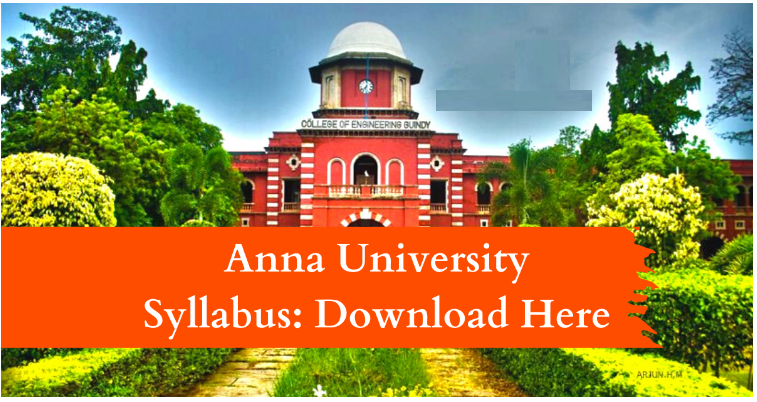EC3452 ELECTROMAGNETIC FIELDS
COURSE OBJECTIVES :
- To impart knowledge on the basics of static electric field and the associated laws
- To impart knowledge on the basics of static magnetic field and the associated laws
- To give insight into coupling between electric and magnetic fields through Faraday’s law, displacement current and Maxwell’s equations
- To gain the behaviour of the propagation of EM waves
- To study the significance of Time varying
UNIT I INTRODUCTION 9
Electromagnetic model, Units and constants, Review of vector algebra, Rectangular, cylindrical and spherical coordinate systems, Line, surface and volume integrals, Gradient of a scalar field, Divergence of a vector field, Divergence theorem, Curl of a vector field, Stoke’s theorem, Null identities, Helmholtz’s theorem, Verify theorems for different path, surface and volume.
UNIT II ELECTROSTATICS 9
Electric field, Coulomb’s law, Gauss’s law and applications, Electric potential, Conductors in static electric field, Dielectrics in static electric field, Electric flux density and dielectric constant, Boundary conditions, Electrostatics boundary value problems, Capacitance, Parallel, cylindrical and spherical capacitors, Electrostatic energy, Poisson’s and Laplace’s equations, Uniqueness of electrostatic solutions, Current density and Ohm’s law, Electromotive force and Kirchhoff’s voltage law, Equation of continuity and Kirchhoff’s current law
UNIT III MAGNETOSTATICS 9
Lorentz force equation, Ampere’s law, Vector magnetic potential, Biot-Savart law and applications, Magnetic field intensity and idea of relative permeability, Calculation of magnetic field intensity for various current distributions Magnetic circuits, Behaviour of magnetic materials, Boundary conditions, Inductance and inductors, Magnetic energy, Magnetic forces and torques
UNIT IV TIME-VARYING FIELDS AND MAXWELL’s EQUATIONS 9
Faraday’s law, Displacement current and Maxwell-Ampere law, Maxwell’s equations, Potential functions, Electromagnetic boundary conditions, Wave equations and solutions, Time-harmonic fields, Observing the Phenomenon of wave propagation with the aid of Maxwell’s equations
UNIT V PLANE ELECTROMAGNETIC WAVES 9
Plane waves in lossless media, Plane waves in lossy media (low-loss dielectrics and good conductors), Group velocity, Electromagnetic power flow and Poynting vector, Normal incidence at a plane conducting boundary, Normal incidence at a plane dielectric boundary
COURSE OUTCOMES :
At the end of the course the students will be able to
CO1: Relate the fundamentals of vector, coordinate system to electromagnetic concepts
CO2: Analyze the characteristics of Electrostatic field
CO3: Interpret the concepts of Electric field in material space and solve the boundary conditions CO4: Explain the concepts and characteristics of Magneto Static field in material space and solve boundary conditions.
CO5: Determine the significance of time varying fields
TOTAL:45 PERIODS
TEXT BOOKS
- K. Cheng, Field and wave electromagnetics, 2nd ed., Pearson (India), 2002
- N.O.Sadiku and S.V. Kulkarni, Principles of electromagnetics, 6th ed., Oxford(Asian Edition), 2015
REFERENCES
- Edward Jordan & Keith G. Balmain,Electromagnetic waves and Radiating Systems, Second Edition, Prentice-Hall Electrical Engineering Series, 2012.
- H. Hayt and J.A. Buck, Engineering electromagnetics, 7th ed., McGraw-Hill (India), 2006
- M. Notaros, Electromagnetics, Pearson: New Jersey, 2011
Click Here to Download Question Paper- Apr/May 2017
Click Here to Download Question Paper- Apr/May 2018
Click Here to Download Question Paper- Nov/Dec 2017
Click Here to Download Anna University Syllabus
Anna University Syllabus Regulation 21 (Sem-2)CIRCUIT ANALYSIS
Anna University Syllabus Regulation 21 (Sem-2)BASIC ELECTRICAL AND INSTRUMENTATION ENGINEERING
Anna University Syllabus Regulation 21 (ECE Sem-2) Physics
Anna University Syllabus Regulation 21 (Sem-2) Mathematics-2
Anna University Syllabus Regulation 21 (Sem-2) English
